Clancy Tucker's Blog, page 138
October 10, 2018
11 October 2018 - A GHOST TOWN IN PARIS

A GHOST TOWN IN PARIS
G'day folks,
Welcome to another site that has been overtaken by progress.
P aris lies is the center of Ile-de-France, the most populated region in the country with more residents than Austria, Belgium, Greece, Portugal or Sweden alone. It boasts the world’s fourth-largest and Europe’s wealthiest and largest regional economy. But one small corner of the region paints a very different picture. Just a thirty minute drive north from the Notre Dame Cathedral in central Paris, lies a ghost town where very little has changed since the mid-twentieth century, except for one deafening adjustment.


Goussainville-Vieux Pays was a quiet little farming village, 20 kilometres away of the hustle and bustle of Paris. At the heart of the village, is a the skeleton of a once grand 19th century bourgeois chateau, overlooking the town’s renaissance church with its rich history that residents once took great pride in. But in the 1970s, the fate of this calm suburban town changed drastically.
A quiet farming village no longer, in 1972 the residents of Goussainville were suddenly under the direct flightpath of the newly-built Charles de Gaulle Airport. The town was now so close to the country’s largest airport in neighboring Roissy that the noise from low-flying planes became unbearable to live with. Residents of the old village watched as neighbors deserted their homes in droves, unable to stand the constant noise of the aircrafts.



The chateau was built in 1860 for a Monsieur Théodore Frapart, whose father served as mayor of Goussainville in the early 1800s. As the town’s wealthiest family, it’s likely they were first to abandon their home in Goussainville, unable to tolerate the noise of jumbo jets flying overhead, disturbing their garden parties.
The house appears to have been the victim of a fire, which claimed the roof, leaving the interior with its ornate frescoes to the elements. It is still owned by Monsieur Théodore’s descendants.
But noise wasn’t the only concern for the residents of Goussainville. A year before the airport even opened, during the Salon de Bourget airshow taking place in the proximity of the new CDG airport, a Soviet prototype plane to become a Concorde competitor crashed in Goussainville, destroying several houses and a children’s school that was luckily closed on that day. All six passengers on the plane and eight people on the ground perished. And then of course the airport opened, constantly reminding residents what might happen again. By 1974, the last 200 inhabitants of Goussainville had abandoned their homes.



Responsible for the abandonment of almost 150 properties in the village, the airport authorities were forced by decree to buy the abandoned houses and look after them. It had probably not been taken into account that Goussainville’s Renaissance church, Saint-Pierre-Saint-Paul was ranked as a historic monument along with all of the buildings within its perimeter. Of the 144 houses, the airport acquired 80.
Even the 14th century Renaissance church began to deteriorate into a sorry state until 2010 when after years of abandonment, local authorities finally stepped in and began efforts to restore it. But still, the jets roar overhead.
The only place which still breaths life within this village is the Libairie Goussainlivres. Opened in 1997 and situated in a charming 19th century house this bookstore plays home to 700m of shelving stacked with an array of second hand books that line the walls of the living rooms. There you will find Nicolas who will happily greet you in a fashion that almost makes you forget the uninhabited silence this village holds.



However, there is no peace to be found in this seemingly picturesque suburban village. Upon arrival, you will be greeted with the screeching of airplane jets. Not more than a minute will pass before the sounds of chirping birds is eclipsed. You’ll have to raise your voice to finish your sentence.
A new and functioning Goussainville does exist today where most of the old residents moved. However it’s probably one of few towns in the world that can say it shifted itself several kilometers to the left. Meanwhile, in the old town, or the ‘vieux pays’ only a handful of faithful residents remain. In 2009, Aéroports de Paris sold half of the historic village back to the community for a symbolic price of 1 euro.

But if you were to take a little detour outside of Paris, you would still find this village frozen in time. The only evidence of a world moved on would be a few cars and the distinct and frequent noise of airplanes passing overhead. In fact the only time this village hears peace since the 1970s is during airport strikes or during incidents like the volcanic eruption in Iceland that grounded air travel across Europe.

Clancy's comment: Ah ... The price of progress, eh?
I'm ...


Published on October 10, 2018 14:10
October 9, 2018
10 October 2018 - B.J. NEBLETT - GUEST AUTHOR AND POET
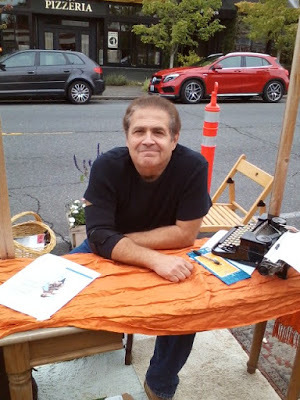
B.J. NEBLETT- GUEST AUTHOR & POET -
G'day folks,
I'm pleased to introduce a good mate of mine who is multi-talented. He's either writing, playing guitar, writing poetry or maybe playing softball ... Etc.
Welcome, BJ ...
1. TELL US A LITTLE ABOUT YOURSELF AND YOUR WRITING JOURNEY.
I can’t remember a time when I wasn’t writing. In grade school we were assigned to write one-page compositions. I was fascinated with space and the efforts to put a man in orbit. Saturday afternoon matinees added to my imagination, so I wrote about creatures from outer space. When I discovered TV’s Twilight Zone and the works of O Henry, I discovered irony. My writings have been infested with irony ever since.
In high school I started writing poetry. My first poetry was published in Encounter: An Anthology Of Modern Poetry while I was in the 11th grade. I was also writing lite romance short stories, what today would be considered Young Adult, mostly to impress the girls.
For 30 plus years as a DJ, I wrote commercial copy and radio programs, along with publishing a few short stories in the fiction and sci-fi pulps. After a few years of nomadic life, during which I wrote my first novel, Elysian Dreams, I settled down in Seattle. I was lucky and found a traditional publisher interested in my work. I’ve been writing and with Brighton Publishing ever since.
2. WHEN AND HOW DID YOU BECOME A WRITER?
I think Stephen King said, “Not to write is suicide.” Or something along those words. Anyway, I agree, and to me writing just comes naturally. I also discovered at a very young age that writing was a great way to order my thoughts. Writing helped me to make some sense out of a world that, to me, seemed to make little sense.
3. WHAT TYPE OF PREPARATION DO YOU DO FOR A MANUSCRIPT? DO YOU PLAN EVERYTHING FIRST OR JUST SHOOT FROM THE HIP?
I guess I’m kind of a scattered writer. By that I mean I have no secrete formula. Short stories usually come from some outside inspiration: something someone said, or something that happened, or even a song or a catchy phrase. Then my mind mulls it over for however long it takes. I usually end up writing short stories in one or two settings.
My novels were a bit different. The inspiration was there as well as thinking about it. But when I sat down to write the characters took over and I just followed their lead. Usually with little or no notes.
Ice Cream Camelot, which is my memoir of growing up during the Kennedy era, was something that bounced around in my mind for many, many years. When it came time to write, it was time! I wrote Ice Cream Camelot in only three months (that’s while also working full time). And much of that time was taken up with doing research to make sure I got my dates and places correct.
I was inspired to write my newest book, Planet Alt-Sete-Nine: The Lost Princessby my closest friend and fellow author Alissa Berger. Alissa is a video gamer, and the idea for Planet Alt-Sete-Ninecame to me as I sat and watched her playing. As I wrote it became clear that PASN was going to be a series of books. It was then that I started taking notes and doing some pre-plotting. I’m more than half way through book two Princess Haylee which should be out around Christmas of 2018, and the notes and planning make sure everything stays aligned and true to the story line.

4. WHAT DO YOU ENJOY MOST ABOUT BEING A WRITER?
I’ve always enjoyed alone time, and productive, fun alone time is great. I love creating situations and characters and then watching how my characters act and react. I tend to ‘binge’ write, that is I’ll write a complete short story or a full chapter of a novel in one sitting with out stopping, until I’ve exhausted what is in my mind. Then, going back over what I have just written, it’s a lot like reading something for the very first time. It often surprises me. That is a wonderful and very satisfying feeling. I think that is the best part of being a writer, letting your characters lead you.
5. WHAT IS THE HARDEST THING ABOUT BEING A WRITER?
I guess the obvious answer to that would be writer’s block. Only I don’t really have that problem, someone or something is always talking to me inside my head. For me it’s not a matter of what to write, but often finding the time to write. Also, since I binge write, I often find I’ve lost myself for hours on end. It can make for some very late nights and sore backs.
6. WHAT WERE YOU IN A PAST LIFE, BEFORE YOU BECAME A WRITER?
I’ve been blessed to be able to follow all my dreams into reality. I love tinkering with old cars and have worked as a vintage car mechanic and restorer. I spent the better part of my adult life on the air as a radio DJ. I’ve played some baseball and still play a lot of softball; even got paid as a for hire corporate ringer pitcher, playing for large companies with teams. Now I’m a published author and I teach writing at Seattle’s famed Hugo House for writers. I’ve also tended bar, DJed in night clubs and ran sound for live bands, and played guitar in a few, including a gig at the Seattle Hard Rock.
7. WHAT IS YOUR GREATEST WRITING ACHIEVEMENT?
Just writing a book or even a short story is an amazing accomplishment. Being published to me is even more difficult. You can write the world’s next greatest novel but getting someone to notice it is a near insurmountable task. But I’ve been lucky. My short story Seven Seconds was named one of the best and most read short stories of 2017. I received the Penn National Poetry Award for My Poem “Amos Fuller Doesn’t Speak.” I was part of the Anne Frank Diary Project. Another poem of mine “Black Wall” was featured on the Rev. Dr. Martin Luther King Memorial Blog, while “The Twelfth Of Never” was read at the Vietnam Memorial Wall. And excerpts from my memoir Ice Cream Camelot, which has been called the ‘60’s version of The Catcher In The Rye, have been used and featured at the John F Kennedy Library. Like I said, lucky.
8. WHAT ARE YOU WORKING ON AT THE MOMENT?
Book two of the Planet Alt-Sete-Nine series, Princess Hayleeis taking up most of my time. My publisher, Brighton Publishing and I are thinking of a Christmas release. But the way things go in publishing, Planet Alt-Sete-Nine: Princess Hayleemay show up early 2019. The rest of my time is involved with release parties, signings, conventions and all the fun things that accompany having written a book.
9. WHAT INSPIRES YOU?
Oh, gosh, just about everything anything. It is usually an inspiration rather than an idea that makes me want to write something. The first thing I ever had published, a poem titled “The Twelfth Of Never” came to me as I sat in high school study hall. It was a Thursday, and the next day was Friday the 13th. Bored and not interested in doing my math homework, I got to wondering what all the fuss was about Friday the 13th, why not Monday the 3rd or Thursday the 12th? The poem almost wrote itself and was published in a national anthology a few months later.
One of my most popular short stories, Rain At The Intersection Of Tomorrow, which appears in the anthology Beyond The Hedge: The Dark And The Light, was inspired while sitting on a park bench with friend and fellow writer KJ McPike.
I’m a great people watcher, so I find inspiration, and lots of great material, all around me.

10. WHAT GENRE DO YOU WRITE?
While genres are great for identifying and cataloguing works, I try and shy away from being pigeon-holed into one genre or another. If I mention that Elysian Dreamscontains elements of time travel and therefore could be considered science fiction, I feel I risk alienating those who may not be into sci-fi or time travel but would otherwise enjoy reading Elysian Dreams, a contemporary fantasy adventure.Ok, the disclaimer being said, I guess most of my work, novels and short stories, fall into the contemporary fantasy/sci-fi genre. Even my romance stories always seem to have some quirk or twist to them. I think that is why they are so popular, the ever-present undercurrent of irony which runs through all my work, even my memoir Ice Cream Camelot.
11. DO YOU HAVE ANY TIPS FOR NEW WRITERS?
I’m sure it’s been said a million times before but WRITE! Keep writing and don’t give up. Being published doesn’t make you a writer, writing does. You may not be published yet, but when you tell someone you are a writer and they ask what you have written, look them in the eye and proudly reply with the title of you latest work! And don’t let the insanely crazy and complicated business that is publishing today intimidate you. It takes hard work, time and patience, but it does pay off in the end.
12. DO YOU SUFFER FROM WRITER’S BLOCK?
Not really. To many it may seem so at times. But that is just because I am such a scattered writer. I can binge write for hours and days, even weeks at a time. And I can go for a month or more without writing a word. But during that time there are always things coalescing in my mind. My problem isn’t what to write but finding the time to write when all those thoughts, ideas and characters are ready to come out.
13. DO YOU HAVE A PREFERRED WRITING SCHEDULE?
Whenever I can find the time. I’ve always been a night person, and I do still have the responsibilities of a full-time job. Writing isn’t paying all the bills yet…it keeps getting better and better, but I’m not there yet. So, I find myself often writing evenings and late into the night. When I’m lost in a story or a chapter, I feel as if I’ve been in some sort of time warp.
14. DO YOU HAVE A FAVOURITE WRITING PLACE?
Elysian Dreams was written entirely by hand on legal tablets, mostly while on the road. My memoir, Ice Cream Camelot came together in large part while sitting at the local coffee house. But that was because I already knew what I was going to say, so it was just a matter of transcribing my thoughts. Now, however, I have my corner writing desk surrounded by my books, my reference materials and my guitars. My routine is to sit down and write with the oldies or classic rock channel playing on the TV and Emily, my guitar next to me. When a certain song comes on I’ll stop and play along, then set Emily down and go back to writing without missing a beat. A strange routine I know, but one that works well for me.
15. WHAT IS YOUR GREATEST JOY IN WRITING?
Creating something fresh and new, and knowing that somewhere, someone is enjoying characters and worlds and plots and twists and irony that I created. It is a humbling joy.
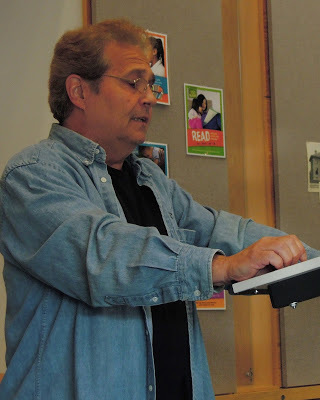
16. WHO IS YOUR FAVOURITE AUTHOR AND WHY?
I have so many it is hard to say. What comes to mind is Charles Shultz and his Peanuts characters who taught me to read. Ray Bradbury who taught me to dream. Rod Serling and HP Lovecraft and especially O Henry from whom I learned about irony. F Scott Fitzgerald showed me it’s ok to bare your feelings in your writing and Flannery O’Connor and Hemmingway and Steinbeck showed me there are amazing stories to be found in ordinary things. There are many incredible contemporary writes that seem to keep challenging me to be a better writer with each of their works. People like George RR Martin, Kim Harrison, Laurell K Hamilton, Kim Stanley Robinson, William Gibson.
17. WHAT’S THE GREATEST COMPLIMENT YOU EVER RECEIVED FROM A READER?
Just being recognized by a reader is a head rush. A couple of reviews I received made me wonder if they had the right author. A side from being called the ‘60’s Catcher In The Rye, someone wrote that if history books were written like Ice Cream Camelot a lot more people would be interested in history. When Elysian Dreams was released, a reviewer said, “Neblett is a writer who dreams like Isaac Asimov and thinks like Haruki Murakami…” That’s heavy company. And a quote of mine was prominently displayed on a sign in a London subway station where thousands of commuters passed daily.
I did have one very strange and memorable encounter with fans. One day, following an afternoon of writing at my favourite coffee shop, I was stopped by a gentleman who recognized me from my book picture. As we talked, a woman interrupted and asked if I was Billy James the radio DJ. She had remembered and recognized me by my voice!
18. WHAT WAS THE WORST COMMENT FROM A READER?
Ha! Mostly, because of Elysian Dreams I get an earful of reader’s thoughts, beliefs and concerns on time travel. They don’t really say I got it wrong, just that it might have worked better their way. I have several appearances, including sci-fi and fantasy conventions coming up in support of Planet Alt-Sete-Nine. I’m sure I’ll learn all about readers views on artificial intelligence and alternate realities!
19. WRITERS ARE SOMETIMES INFLUENCED BY THINGS THAT HAPPEN IN THEIR OWN LIVES. ARE YOU?
All the time. Sometimes I think I am the posted boy for irony. I always tell people that if they want to get to know me just read my books and stories. You can always find a small part, and sometimes a not so small part, of me in my writing. That is especially true of my short stories.
20. OTHER THAN WRITING, WHAT ELSE DO YOU LOVE?
If I didn’t fall into radio I would have been either a history teacher or a major league baseball pitcher, maybe both. I still play a lot of softball. A while back, a singer for whom I had played guitar locally, asked me to tour with her. I still enjoy playing but I’m too old for even a short time on the road. I also have a large collection of records from my radio days and I enjoy getting together with my close friends. Here recently we’ve gotten into going to an arcade to play virtually reality video games.
21. DID YOU HAVE YOUR BOOK / BOOKS PROFESSIONALLY EDITED BEFORE PUBLICATION?
Yes. I am traditionally published, so they provided the final editing. I also trade chapters with my two close writer friends Alissa Berger and KJ McPike. Both ladies are accomplished writers and they make great sounding boards for works in progress. I do the same for them and it works well.
22. DESCRIBE YOUR PERFECT DAY.
Gosh, a tough question. I enjoy so many things and every day. My better half, Shae would be there. And I’m sure it would involve writing at some point and/or discussing writing while enjoying time with my friends. It would have to be sunny and comfortable enough to be outside. There would be music and maybe some playing softball and/or taking in a baseball game.

23. IF YOU WERE STUCK ON A DESERT ISLAND WITH ONE PERSON, WHO WOULD IT BE? WHY?
It would be Shae… she ‘gets’ me and she makes me laugh.
24. WHAT WOULD YOU SAY IF YOU HAD THE CHANCE TO SPEAK TO WORLD LEADERS?
Cut it out!
25. WHAT ARE YOUR PLANS FOR THE FUTURE?
Keep writing. Do more traveling in support of my books. I’ve always wanted to see Australia. You may find me on your doorstep one day, Clancy.
26. WHAT ARE YOUR VIEWS ON BOOK TRAILERS? DO THEY SELL BOOKS?
I really don’t know, but I also don’t see how they do. I think they are an interesting marketing tool, and some are very cleaver. But I just don’t know.
27. DO YOU SEE YOURSELF IN ANY OF YOUR CHARACTERS?
Nearly all my romance shorts and many of my other short stories. Professor Collin Crowly from Elysian Dreams is the history professor I’ve always dreamt of being. And you just might recognize a newly introduced character in book two, Planet Alt-Sete-Nine: Princess Haylee!

28. DOES THE PUBLISHING INDUSTRY FRUSTRATE YOU?
Only in that I see so many good works and writers going un or under recognized. Why I don’t know except that there is so much product out there these days. It is indeed a tough and demanding business. And I can understand the way things work from the publisher’s view, but as a writer it is still frustrating.
29. DID YOU EVER THINK OF QUITTING?
Quitting writing? I don’t think I could even if I wanted, it comes so easy and natural for me. There is always something coming together in my head, characters talking to me, and if I don’t let them out they keep me awake at night. So, I guess the short answer is no.
30. WHAT WAS YOUR FAVOURITE MANUSCRIPT TO WRITE? WHY?
They are all fun in their own way. Elysian Dreams began life as a writing exercise that turned into a short story. Then the characters kept talking to me and telling me there was so much more to be said. So, I listened.
Planet Alt-Sete-Nine was and is a very fun book to write. I see so many of my friends in the characters and artificial intelligence, alternate realities and video gaming are such popular and relevant topics.
But I’d have to say writing Ice Cream Camelot was probably my favourite. Aside from being my own personal story, it was so much fun recalling those days and revisiting my childhood friends and sweetheart again. Parts were tough to write, others flowed; some brought tears, some brought gasps in amazement that we survived. But it was a wonderful and very cathartic experience.

31. HOW WOULD YOU DEFINE ‘SUCCESS’ AS A WRITER?
Writing a book, or a story or a poem or a play or anything. Just the act of writing is success. Writing is a very personal thing that cries out to be shared but doesn’t need be to be successful. How’s that for irony?
32. WHAT SHOULD READERS WALK AWAY FROM YOUR BOOKS KNOWING? HOW SHOULD THEY FEEL?
Hopefully they should feel satisfied and wanting more; knowing that their time was well spent. If a reader takes anything from my books and stories, anything at all, I consider that an honor. I try not to preach or impart my ideals or ideas on readers. My job as an author is to write something that people will read and enjoy in their own way. If they take nothing I am satisfied that they have taken the time to read my work. If they do take something from it, all the better.
33. WOULD YOU LIKE TO HAVE YOUR BOOKS MADE INTO MOVIES? EVER WRITTEN A SCREENPLAY?
Funny, I once wrote an episode for the TV show “Charlies Angels”. To my surprise, it was accepted and considered but the show ended before they ever produced it. That was my one attempt at any kind of screen writing. But, yes, I think it would be cool to see my memoir Ice Cream Camelot on the screen. And I’ve been told that Planet Alt-Sete-Nine would make a great movie. I hope someone looking for their next project is reading and paying attention!
34. HOW MUCH THOUGHT GOES INTO DESIGNING A BOOK COVER?
Hummm… good question. I designed the cover of Elysian Dreams, it is the house in the story. My publisher liked it and used it. There was never any question to me about the cover of Ice Cream Camelot. I had a vision and discussed it with a very talented illustrator and artist and second baseman, Emily Gussin. She did an excellent job bringing my idea to life.
As for Planet Alt-Sete-Nine, I had no clue. I left it up to my publisher Brighton Publishing and they knocked it out of the park, it’s a great representational cover.
35. WHAT’S YOUR ULTIMATE DREAM?
Another head scratcher… I don’t really know. Sure, it would be great to be as wildly popular as say Stephen King. But I’d be happy if my books just kept being published, read in increasing numbers and paid all the bills. Beyond that I guess just being able to continue to write and play softball and be surrounded by my close friends in a peaceful, loving world.

36. WRITING IS ONE THING. WHAT ABOUT MARKETING YOU, YOUR BOOKS AND YOUR BRAND? ANY THOUGHTS?
If I knew the answer to that I WOULD be as wildly popular as Stephan King! I really enjoy going to book and sci-fi/fantasy conventions and doing reading and signings and appearances and meeting readers. I’d like to be able to do that full time. I know social media is very important and I try to do my part, but to really do it properly I wouldn’t have any time left to write. Quite a catch 22. Shae helps a lot, but I think to really be successful and market yourself and your books properly you need someone doing it full time. But who can afford that? I’ve thought of looking for an agent, but again, just don’t have the time. So, again, if anyone is out there looking for their next up and coming client, pay attention!
37. DESCRIBE YOURSELF IN FIVE WORDS.
The best me there is.
38. WHAT PISSES YOU OFF MOST?
Stupid people.
39. WHAT IS THE TITLE OF THE LAST BOOK YOU READ? GOOD ONE?
Just re-read my signed copy of Johnny Cash’s Man In Black. Johnny’s own story in his own words… need I say more?
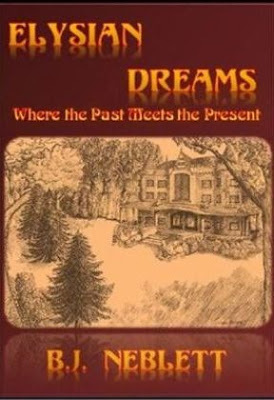
40. WHAT WOULD BE THE VERY LAST SENTENCE YOU’D WRITE?
Probably something like, “The book is fine, Kelly, stop changing it and publish it!”
41. WHAT WOULD MAKE YOU HAPPIER THAN YOU ARE NOW? CARE TO SHARE?
I guess just to see my books reach more people. I don’t have to achieve best selling author status, but it sure would be nice to be able to just write… and play softball.
42. ANYTHING YOU’D LIKE TO ADD?
Just a big thanks to you, Clancy! You are one great renaissance man, you do it all and still make time to help and recognize others. The world needs more like you.

WEBSITE
BLOG
POETRY BLOG

Clancy's comment: Thanks, BJ. there is no end to your talents ... Or, charm. Stay well my friend. Love ya work!
I'm ...


Published on October 09, 2018 13:49
October 8, 2018
9 October 2018 - DAISY MAY BATES - HUMANITARIAN

DAISY MAY BATES - HUMANITARIAN -
G'day folks,
Welcome to some facts about one of Australia's first humanitarians.
Daisy May Bates, CBE was an Irish-Australian journalist, welfare worker and lifelong student of Australian Aboriginal culture and society. She was known among the native people as "Kabbarli".
Daisy May Bates (1863-1951), welfare worker among Aboriginals and anthropologist, was born on 16 October 1863 in Tipperary, Ireland, daughter of James Edward O'Dwyer, gentleman, and his wife Marguarette, née Hunt. Her mother died in Daisy's infancy and she had an unstable childhood. On the death of her maternal grandmother she was put, aged about 8, in the care of Sir Francis Outram's family in London.

Suspected of having contracted pulmonary tuberculosis, she migrated to Australia in 1884 and lived briefly at Townsville, Queensland, as a guest of Bishop G. H. Stanton. On 13 March 1884, at Charters Towers, Daisy May O'Dwyer married Edwin Henry Murrant. It is almost certain that this was Harry Harbord Morant. Shortly afterwards, he and Daisy separated. Late that year she was employed as a governess at Berry, New South Wales.
On 17 February 1885 at Nowra she married Jack Bates, a cattleman. When he resumed droving she travelled to Sydney where, on 10 June 1885, she married Ernest Baglehole. Within months she was back with Bates; they had a son Arnold in 1886. She showed only a distant attachment to husband and son, leaving both in Australia when she returned to England in 1894 for what turned out to be a stay of five years. In London she worked on the Review of Reviews, learning the craft of journalism which was to become a crucial source of income when she lived with the Aboriginals.
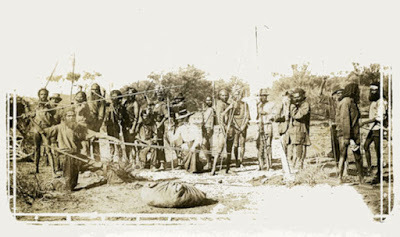
Daisy Bates returned to Australia in 1899. Interested in an allegation in The Times about atrocities against Aboriginals in north-west Australia, she went to the Trappist mission at Beagle Bay, north of Broome. Here she had her first long contact with Aboriginals while working at this decaying settlement and its market gardens.
The north-west also saw the start of her inquiries among the local Aboriginals when in 1901 she temporarily rejoined her husband on the cattle-station at Roebuck Plains, where tribes from the Broome district were camped. Her curiosity about the camp's disputes and scandals led her to investigate their roots in kinship. She started to collect vocabularies and saw sacred and secret ritual life. These eccentric interests further estranged her from her husband, and she finally left him after a harrowing ride over-landing cattle from Broome to Perth in 1902.

Daisy Bates had already shown such anthropological promise that in 1904 she was appointed by the Western Australian government to research the tribes of the State. Next year this task was temporarily narrowed to a study of the Bibbulmun tribe of the Maamba reserve in the south-west, where she conducted her first concentrated period of field-work. She recorded wide-ranging data on language, myth, religion and kinship.
In an important 1905 paper on marriage laws she showed the equivalences of the four-section system for northern tribes and those to the south. By 1910 she had completed a substantial manuscript on the Aboriginals. Its publication was fatally delayed by the arrival from Britain of an expedition, led by A. R.
Radcliffe-Brown, to study the social anthropology of Aboriginals of the north-west. Because of her experience Daisy Bates was appointed a member of this expedition but she turned herself to welfare, moved by the miseries of the sick and elderly Aboriginals enforcedly exiled on the islands of Bernier (the males) and Dorré (the females). Her anthropological knowledge showed her that to physical distress were added the mental agonies of unnatural juxtapositions of tribe and kin. She claimed that it was there that the Aboriginals gave to her the affectionate name 'Kabbarli', meaning grandmotherly person.
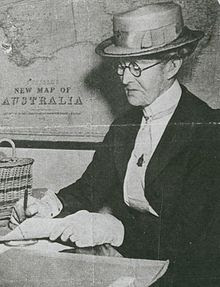
In 1912 she established the first of the harsh, isolated camps for which she became renowned. She camped at Eucla amongst the remnants of the Mirning tribe on the southern fringe of the Nullarbor Plain. She was invited to attend meetings in eastern capitals in 1914 of the anthropological section of the British Association for the Advancement of Science. To attend, she arranged a crossing of 250 miles (402 km) over the southern Nullarbor Plain in a small cart pulled by camels.
She returned in 1915 to the Mirning's area, but this time to the eastern margin near Yalata. In 1918, during a brief stay in Adelaide, she failed to extract from the South Australian government a protectorship and money for medical work. Nevertheless, she set off for a stay of sixteen years at Ooldea, a permanent water-hole on the trans-Australian railway around which Aboriginals had gathered. Here the travelling public could see her remarkable welfare work. In 1920 she was appointed a justice of the peace. Three visits by royalty brought her fame and she was appointed C.B.E. in 1934.
At Ooldea in 1932 Daisy Bates had been befriended by the writer Ernestine Hill, who aided her return to Adelaide in 1935 and the writing of her autobiography, 'My Natives and I', serialized in several newspapers. Those episodes dealing with the latter part of her life were edited into The Passing of the Aborigines (London, 1938). To prepare her papers for the national collection the Australian government had, in 1936, given her a stipend. The sum was insufficient for normal living so she chose to do the work in a tent at Pyap on the River Murray. This episode successfully ended in 1940 with the transfer of ninety-nine boxes of papers to the Commonwealth National Library.
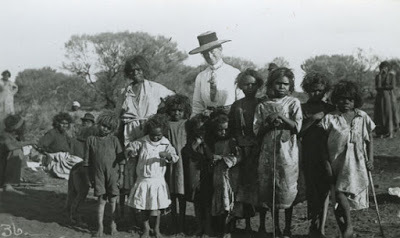
Still with some government stipend, she was living in 1941 in the railway siding of Wynbring, east of Ooldea. Her letters show that old age and failing health were at last making such an austere life untenable. By 1945 she was back in Adelaide, where a secretary who worked with her briefly found her 'an imperialist, an awful snob … a grand old lady'. She died in an old people's home at Prospect on 18 April 1951, leaving an estate valued for probate at £66.
Though applauded for the self-sacrifice of her welfare work, Daisy Bates had no illusion about her own motives, which she privately identified with those that had previously impelled her to enjoy such sports as hockey, tennis and fox-hunting.
She wrote some 270 newspaper articles about Aboriginal life, valuably sensitive accounts of cultures customarily presented in the press as unintelligibly bizarre. However, her repeated, emphatic assertions concerning Aboriginal cannibalism aroused much controversy. She strongly opposed miscegenation; her belief that Aboriginal full-bloods would become extinct unless segregated from Europeans was proved wrong by the population statistics of the years following the Passing. Nevertheless her widely read defeatist views helped prod governments into action in medicine and child care.
Radcliffe-Brown had likened her mind to a well-stocked but very untidy sewing-basket. Her anthropology found little favour with anthropologists and her papers lay dormant for three decades, though latterly they have received some scholarly attention. The usefulness of the collection as a resource of anthropological information lies in the strong empirical thread in her research, coupled with a precocious manifestation of the anthropological method of living with one's subject. She had been careful 'never to intrude my own intelligence upon' the Aboriginals. Her place in Australian folklore has been formalized by the opera, The Young Kabbarli, written by Lady Casey to music by Margaret Sutherland. Her achievements remain the subject of sustained controversy.

Clancy's comment: A true pioneer.
I'm ...


Published on October 08, 2018 13:00
October 7, 2018
8 October 2018 - THE TURKISH AKBASH GUARD DOG
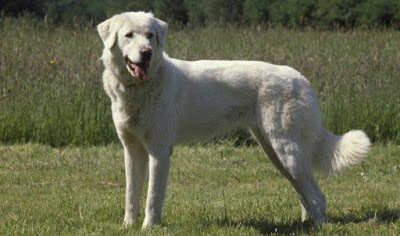
THE TURKISH AKBASHGUARD DOG
G'day folks,
I'd never heard of these wonderful dogs.The Akbash Dog is native to Turkey, and it is primarily used as a livestock guardian dog or shepherd dog. It is officially recognized by the KIF, a.k.a. the Turkish Kennel Club. This dog is one of the national dog breeds of Turkey.
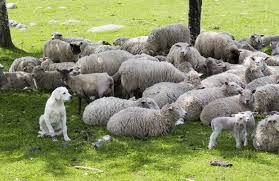
Akbash History and Domestication
The Akbash is a large, white breed of domestic Dog, native to the plains and mountainsof western Turkey. The Akbash is a guard Dog and was originally bred by shepherds around 3,000 years ago to create a white-coloured Dog that could guard their flock of Sheep. Although the exact reasons for this particular choice in colourare unknown, it is widely believed that a white guard Dog was wanted, to ensure that it wasn't mistaken for a hungry predator, such as a Wolf. The Akbash is an ancient breed of domestic Dog and although it is thought to have derived from similar breeds in Italy and Hungary, its exact ancestry is not really known. These other continental guard Dogs however, were thought to have been brought into Europefrom parts of Asia.
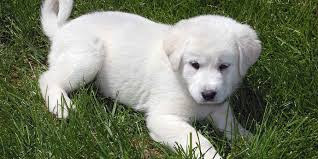
Akbash Physical Characteristics
The Akbash is a large and powerful breed of Dog, that is perfectly built for a life of Sheepguarding in the mountains. It has a short to medium length coat, which is white in colourwith occasional patches of light brown. The coat of the Akbash is coarse to prevent it from matting when exposed to the alpine elements, and the double-layer allows it to also be water-resistant, protecting the Akbash from getting too cold. The Akbash has a big head and powerful jaws, along with a very strong body, a short neck and large, curved toes. The tail of the Akbash is very distinctive to the breed as it is not only long and curved, but is also covered in longer, feathered fur. The Akbash has thickly padded feet and almond-shaped eyes that vary from gold to dark brown in colour.
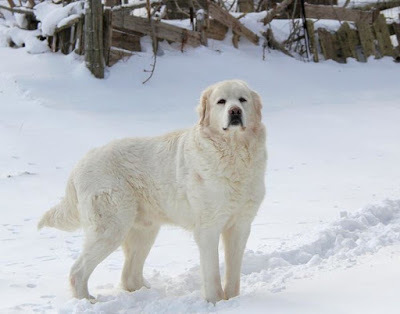
Akbash Behaviourand Temperament
The Akbash was originally bred by shepherds to guard their flocks from large mountain predators, so they are naturally a dominant and aggressive breed. They are one of the most primitive guard Dogsamong domestic breeds today and therefore require a firm and experienced owner. They are however, intelligent and courageous animalsthat risk their lives to protect the animalsand people under their guard. The Akbash is a very loyal breed, completely devoted and dedicated to their owner and often regard strangers that are not in their owner's presence, as suspicious. The Akbash is very independent with strong and protective instincts, known to respond quickly and without help in the case of emergency, when it feels that its flock is under threat.

Akbash Breeding
The Akbash breed first appeared roughly 3,000 years ago, when it was bred to be a strong and protective guard Dog that was white in colour. Although the breed itself has changed very little since the early days, individuals found in households today are less dominant and aggressive than these original guard dogs. They are however still bred to guard livestock, particularly on the ranches in southern America where they are used to protect animalsfrom large carnivoreslike Coyotes and even Bears. Since their introduction the USA in the 1970s, the breed has become a popular guard Dog and although affected by hip problems like other larger breeds, they are not thought to be so badly affected. The Akbash tends to give birth to between 7 and 9 puppies per litter, which are fully mobile within their first 6 weeks.

Akbash Interesting Facts and Features
The Akbash is known to be a calm and clean breed of domestic Dog, and happily lives both inside and outside the house. Their fur also has little odour compared to that of other breeds. They are also known to have strong maternal instincts, and have been observed aiding Sheep in cleaning their newborn lambs. In its native country of Turkey, the Akbash was named after the Turkish word akbas, which means "white-headed". The Akbash breed first became popular as a household pet when 40 Dogs were imported into the USA from Turkey in the 1970s. These Akbash individuals are thought to be the ancestors of the entire population there today.

Clancy's comment: I'd certainly heard of and seen the Italian guard dogs, but all of these guard dogs are amazing.
I'm ...


Published on October 07, 2018 13:02
October 6, 2018
7 October 2018 - A COLLECTION OF QUOTES

A COLLECTION OF QUOTES
G'day folks,
It's time for some inspiring quotes to get you started.











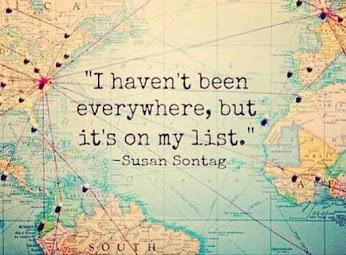




Clancy's comment: Mm ... A lot of common sense, eh?
I'm ...


Published on October 06, 2018 13:47
October 5, 2018
6 October 2018 - EMIL ZATOPEK – CHAMPION ON AND OFF THE TRACK
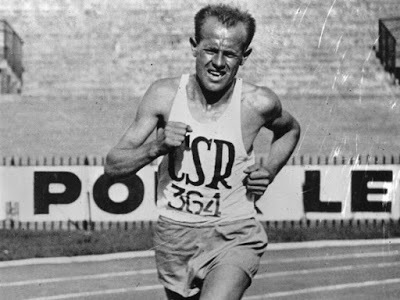
EMIL ZATOPEK – CHAMPION ON AND OFF THE TRACK -
G'day guys,
Welcome to some interesting facts about an amazing athlete; on and off the track.
Emil Zatopek was a Czechoslovak athlete who won three gold medals at the 1952 Helsinki Olympics (5,000m, 10,000m and marathon). He was noted for his relentless training regime which involved a pioneering use of interval training. A hero in his native Czechoslovakia he was an influential member in the Communist Party, however, he was later expelled for supporting the democratic movement of 1968 and as a consequence was forced to work in dangerous mining jobs. He was rehabilitated in 1990 by Czech President Václav Havel. Zatopek is considered one of the greatest athletes and sporting personalities of the Twentieth Century.
Emil Zatopek was born in Czechoslovakia in 1922. His working-class parents, Frantisek and Anzeka had eight children in all. The large family meant family finances were spread thinly and Emil was always conscious of living close to the poverty line.
As a child, Zatopek was a bright, independently minded spirit, with an unusual power of memory. Many friends said an abiding characteristic of the young Zatopek was his willingness to try everything differently.
In 1937, just short of his 15th birthday, Zatopek left his hometown to work in the large Bata factory in Zlin. For the time, it was a reasonable job, though very disciplined and somewhat repetitive.
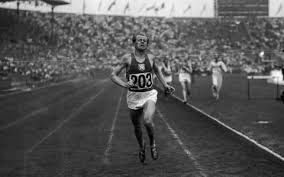
Aged 18, he had no interest in running but on one occasion was picked by his company to join a race. Despite his protestations that he was unfit, he was forced to start the race and ended up coming second out of 100. This began his interest in running, and within four years he was representing Czechoslovakia. The second world war and the German occupation of Czechoslovakia meant he lost some of the best years of his career. But, during the war, he was able to persevere with his training and make significant improvements.
After the Second World War, he joined the new Czechoslovakia army, who were sympathetic to allowing him time to train – especially as international success followed. In 1948, he became a household name winning the 10 km in the austerity London Olympics. He also finished second in the 5 km, though many felt that running with greater reserve in the heats may have enabled him to win.
After the 1948 Olympics, Zatopek’s dominance of middle-distance running grew – leading to several world records. On 29 September 1951, Emil Zatopek became the first person to run 20 kilometres in under one hour and broke four world records in one breathtaking race. By the end of 1953, he held eight world running records—the only man in history to hold so many records at the same time. In total, he set 18 world records.
1952 Helsinki Olympics
In 1952, Emil Zatopek achieved one of the greatest Olympic feats of all time – something that will probably never be reproduced. He won gold in the 5km, 10km and then at the last moment decided to run his first ever marathon. Despite no previous experience at the distance, he won the race by over two minutes. This triple Olympic gold remains an unprecedented achievement. The amazing feature of this Olympics was that two months before the Olympics, doctors advised him not to race because of an infected gland. Zatopek ignored the doctors’ advice.

Another incident shortly before the 1952 Olympics also illustrates Zatopek’s willingness to take an unorthodox stance. In 1952, Czechoslovakia was in the throes of great political oppression, with many people put in jail and executed for ‘suspect’ political views. Stalinist purges were widespread and even athletics was not immune. Just eight months prior, the entire national ice hockey team were arrested and eight players sentenced to a total of 77 years – their crimes were supposedly contemplating defection.
Shortly before the Olympics, Stanislav Jungwirth was excluded from the national team on the grounds his father was in prison for political offences. But, Zatopek was infuriated and told the Ministry of Sports that “If Standa does not go nor will I”
Zatopek’s stance was brave and perhaps foolhardy, as the consequences could have been severe. It was also remarkable given what was at stake for Zatopek and he was widely tipped to be favourite for at least two Olympic golds. In the end, the Ministry of Sports climbed down and allowed both Standa and Zatopek to travel. However, a dossier was made on Zatopek for his possible punishment after the games. It was with this threat hanging over his head, that Zatopek competed in the Olympics. His unique triple of Olympic golds gave Zatopek a public popularity which saved him from further punishment, a lesser athlete would probably have fared very differently.

Zatopek was not just an Olympic champion, but a gregarious character who spontaneously built up relationships and goodwill with athletes from other countries. In the 1952 Helsinki Olympics, it was Zatopek who embodied the Olympic ideal – often allowing westerners into the separate Warsaw Pact Olympic accommodation.
To Zatopek, the Olympics was significant for its ideals of international friendship. He learnt to speak several languages and easily struck up conversations with people from around the world. He had a deeply generous spirit – frequently helping out strangers or people who came to see him in his Prague flat.
Emil Zatopek Running Style Emil Zatopek threw everything into his running and this was reflected in his agonising facial expressions. His running style was often criticised for being gangly, inefficient and unattractive, but Zatopek retorted you don’t win any prizes for looks in a running race. He ignored his critics and retained his unique style throughout his career.

Emil Zatopek’s Training
Emile Zatopek was renowned for his hard training routines. He would train whatever the weather and push himself through punishing training routines to get the best out of himself. He is said to have done 400-metre intervals up to 80 times in one training session. In many ways, Zatopek was a great pioneer of interval training – making short, hard intense efforts. His philosophy was to develop speed and then be able to repeat this over a long period of time.
The Aussie Connection
As well as being a great runner, Emil was legendary for his generous heart and good nature. The great Australian runner Ron Clarke had achieved many spectacular achievements in athletics, but, an Olympic gold had always eluded him. When Ron Clarke went to visit Zatopek, Zatopek accompanied him to the airport. At the last moment, Zatopek thrust something into his hand. Clarke thought it might be some secret document, but, when he got on the plane he was shocked to see an Olympic gold medal with a note from Zatopek saying simply ‘Because you deserve it’.


Clancy's comment: Wow, you have to admire a man who gave a gold medal to one of his competitors.Love ya work, Emil!
I'm ...


Published on October 05, 2018 13:59
October 4, 2018
5 October 2018 - FACTS ABOUT THE JUMPING SPIDER

FACTS ABOUT THE JUMPING SPIDER
G'day folks,
Welcome to some interesting facts about a cute creature.
Jumping spiders are a group of spiders that constitute the family Salticidae. This family contains roughly 635 described genera and about 6080 described species, making it the largest family of spiders with about 13% of all species.
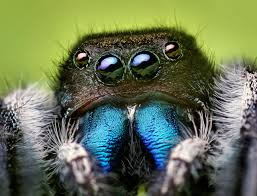
There are over 5000 species of jumping spider – this makes them the most numerous of species in the spider family.They can be found all over the world and thrive in various types of habitat, from mountainous regions to deserts.They do not catch their prey using webs like many spiders – but instead ambush them by leaping on top of them.They have 4 pairs of eyes which allows them to focus on insects from about 20cm away – this way they can distinguish between prey and danger.The hair on their legs helps them walk across very smooth surfaces like glass more easily.They can jump about 50 times their body length!
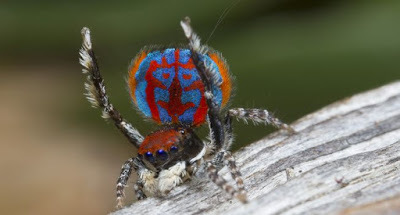

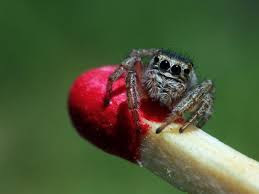


Clancy's comment: Yet, another cute creature, eh?
I'm ...


Published on October 04, 2018 13:15
October 3, 2018
4 October 2018 - LOST WORDS

LOST WORDS
G'day folks,
Welcome to some more lost words, and some sample sentences in which they are used.
igniparous adj 1684 -1684 bringing forth fire The heroes were scorched by the dragon's igniparous emanation.
impigrity n 1623 -1721 quickness; speed The impigrity of the contract's signing led to vexing legal wranglings.
improcerous adj 1656 -1658 low; short The coffee table was much too improcerous to be of any real use.
incabinate v 1672 -1672 to enclose in a cabin; to confine The solution to her writer's block was to incabinate herself at her country villa.
ingeniculation n 1623 -1658 bending of the knee His ingeniculation was in vain, and she turned away in disgust, never to return.
ingordigious adj 1637 -1734 greedy; avaricious Your ingordigious ways are cruel and heartless; charity is the path to joy.
inocciduous adj 1656 -1658 of a star, never setting Polaris was his inocciduous guide as he trekked across the Great Plains.
inobligality n 1663 -1663 quality of not being obligatory Granting the inobligality of bringing a gift to the party, it is still polite to do so.
interfation n 1656 -1658 act of interrupting another while speaking His boorish interfations were ill-received at the academic lecture.
inveteratist n 1715 -1715 opponent of reform; one who inveterately holds to tradition The golf course's manager, being an inveteratist, continued to refuse women entry.
ipsographic adj 1817 -1817 self-recording He used the CD burner primarily for ipsographic purposes.
irredivivous adj 1656 -1656 unable to be revived Despite Dr. House's best effort, the patient remained irredivivous.
isangelous adj 1768 -1774 equal to the angels I've had just about enough of her isangelous and self-righteous diatribes.
jecorary adj 1684 -1684 of or relating to the liver The alcoholic's refusal to seek treatment caused him no end of jecorary trouble.
jobler n 1662 -1662 one who does small jobs We've found a great jobler who takes care of our repairs quickly and cheaply.
jumperism n 1800 -1876 principles of a jumping Methodist sect While snake-handling is ridiculous, it is no worse than jumperism or the stylites.
jungible adj 1656 -1656 that may be joined The trailers are jungible by means of a complex hitching system.
jussulent adj 1656 -1658 full of broth or soup The bubbling of the jussulent cauldron and the crackling of the campfire soothed her.
kalotypography n 1834 -1834 beautiful printing Medieval manuscripts are attractive, but modern kalotypography surely surpasses them.

Clancy's comment: Mm ... One can understand why they have slipped through the cracks.
I'm ...
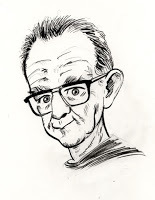

Published on October 03, 2018 13:36
October 2, 2018
3 October 2018 - SIR JOSEPH BANKS
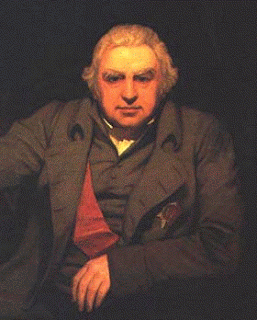
SIR JOSEPH BANKS
G'day folks,
Sir Joseph Banks, 1st Baronet, GCB, PRS was an English naturalist, botanist and patron of the natural sciences. Banks made his name on the 1766 natural history expedition to Newfoundland and Labrador.
The only son of a wealthy land-owning family. From an early age, his declared passion was natural history, and in particular, botany. Shortly after inheriting his family's fortune in the early 1760s he chose to pursue this passion to the full. In 1766 he travelled to Newfoundland and Labrador to collect plants, animals and rocks and was elected a Fellow of the Royal Society in the same year.
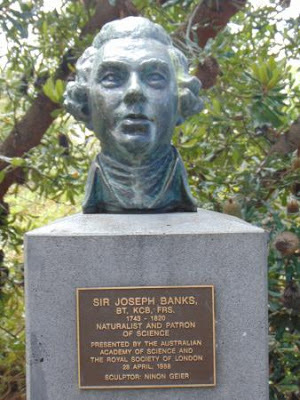
When the Royal Society was successful in initiating Captain Cook's 1768 expedition to Tahiti for astronomical observations, Banks obtained permission from the Admiralty to join the venture. For him, this was like a present-day scientist being given the chance of a trip to another planet, a chance to study new plants in unknown lands.
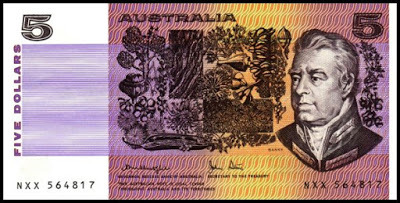
They made collections and observations in South America, Tahiti and New Zealand before reaching Australia. His major landfalls on the eastern coast of Australia were at Botany Bay (28 April - 5 May 1770) and at the Endeavour River (17 June - 3 August). By now the... 'collection of plants was . . . grown so immensely large that it was necessary that some extraordinary care should be taken of them least they should spoil . .'
The plant material collected and sorted on the voyage was extensive, with the herbarium specimens accounting for about 110 new genera and 1300 new species.

After his triumphant return from this voyage, Banks travelled to Scotland, Wales, Holland and Iceland, collecting more and more 'curiosities'. Among a host of other activities, including the running of his estates, he controlled the Royal Botanic Gardens, Kew and was a Trustee of the British Museum. In 1778 he also became President of the Royal Society, an office which he held until his death in 1820. He was knighted in 1781.
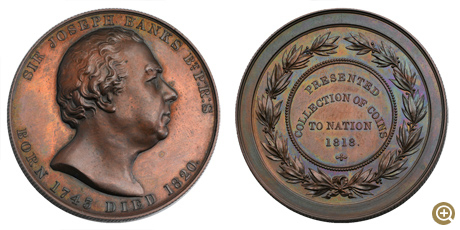
Although the suggestion by Linnaeus that the new country should be named 'Banksia'* was not adopted, Banks's name was bestowed upon a genus of Australian plants and he made his mark upon Australian history in other ways.
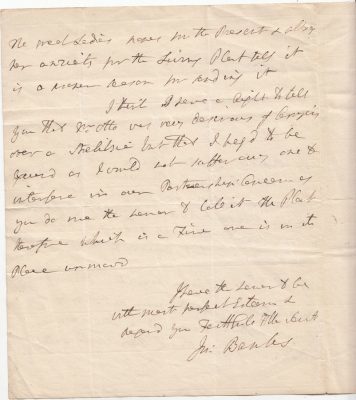
When the British government was casting about for a suitable place to establish a penal colony, Banks was an advocate for Botany Bay. After the settlement was established at Sydney Cove, he encouraged further investigation of the natural history of the area and became the acknowledged authority on matters relating to New South Wales. His impact on the study of natural history in both Britain and Australia cannot be overestimated.

Clancy's comment: He was obviously passionate about his job, and was highly decorated for it.
I'm ...


Published on October 02, 2018 14:14
October 1, 2018
2 October 2018 - A GHOST VILLAGE IN PROVENCE
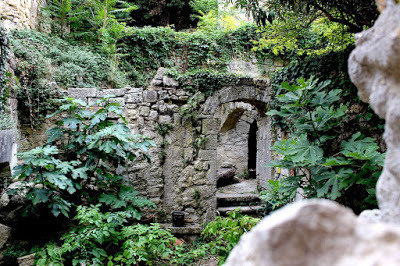
A GHOST VILLAGE IN PROVENCE
G'day folks,
Well, here is a possible writer's retreat.
Hidden in Provence is a haunting ghost village. Perched high upon a mountaintop in the Lubéron is an ancient town, filled with narrow, cobbled streets, the ruins of empty homes and an old castle. It was once used as a hideout during World War II, and was home to the lady who stole the heart of Antoine de Saint-Exupéry.
The story of Oppède-le-Vieux is really a tale of two towns. One in the valley, is still thriving. Whilst its twin, lies empty on the mountaintop overshadowing it.
Oppède-le-Vieux dated back to the 12th century, and used to be bustling town, with homes carved into the mountainside, surrounded by ramparts, and at its centre, a church and a castle. Once, this charming town of steep, winding streets was home to over 900 people.

But as beautiful and picturesque as Oppède-le-Vieux was, it became increasingly impractical to live in by the 19th century. The Petit Lubéron mountain cast an almost ever present shadow over the town, which made the quaint homes dark, damp and hard to maintain.

Faced with a daily climb down the mountain, many of the farmers working in the valley below Oppède-le-Vieux simply began living in it, giving birth to a new town, called Oppède-le-Poulivets. Oppède-le-Poulivets swiftly became a far more practical place to live, with its closer proximity to the olive groves, fruit orchards, vineyards and fields of lavender. The town hall itself moved down into the valley in 1909, sealing forever, the fate of Oppède-le-Vieux.

The old, medieval town perched on the rocky precipice was left empty and abandoned, slowly becoming reclaimed by nature. Roofs fells in, the caverns burrowed into the mountainside became lost in the undergrowth, and the ancient castle fell into ruin.

But the story of Oppède-le-Vieux took an unusual twist in the summer of 1940; for when France fell to Germany, a group of architects and artists sought refuge amongst the crumbling ruins of the mountain village.
The rabbit warren nature of the old ghost town proved to be the perfect hiding place for a commune of around 50 artists, calling themselves le Groupe d’Oppède.

We know a little of the daily life of hiding amidst the haunting ruins, as one of the commune wrote an account called ‘Kingdom of the Rocks’ in 1946. She was born Consuelo Suncin de Sandova, but is better known as the most likely inspiration for ‘The Rose’ in her husband’s most famous book, the Little Prince. Consuelo had met and married Antoine de Saint-Exupéry in 1931.
The pioneering aristocratic aviator and writer disappeared never to be seen again in 1944, it is thought somewhere over the Mediterranean, south of Marseille.



The small community thrived in their secret hideout, bring life back to the ruined town. They wired electricity into their makeshift homes and artists studios, Consuelo de Saint-Exupéry writing of how, “as night blotted out the Lubéron this was the only gleam of light that could be seen in the valley. The peasants of the lower slopes and plain said to each other now, in a blending of hope with superstitious fear : ‘The lamps of Oppède have been lighted again!”The secretive commune set up a school, and renovating the town; “they were all lost in their labour”, explained Consuelo, “they painted….blotting out the grey stains of time and the dinginess of neglect these vast halls had suffered for at least a century.”
In 1942, Germany dissolved the Free Zone, occupying all of France, forcing the artists hiding in Oppède to flee their idyllic mountain retreat, leaving it abandoned once more. Consuelo wrote, “the first German patrol entered the ancient town of ruins, finding most of the houses empty and the studios full of rubbish.”

Following the abandonment of Oppède-le-Vieux by the commune, the end of the war saw several people move back up the mountain, but today the old town is still largely empty. One visitor wrote of how, “there remains a beguiling atmosphere, shadows hovering behind every crumbling corner, a sense of the past and of things that happened long ago.”
Exploring Oppède-le-Vieux on foot is one of the most magical things to do in one of the most beautiful parts of France. The winding streets lead to crumbled old houses, to caverns dug into the mountain walls and half hidden by ivy, to an old graveyard overlooking the newer town below and the ruins of a castle, where once the beloved wife of the doomed Antoine de Saint-Exupéry wrote, “the seeds sown in the ruins of Oppède will die, only to be born anew.”

Clancy's comment: Wow, what a waste.
I'm ...


Published on October 01, 2018 13:00



